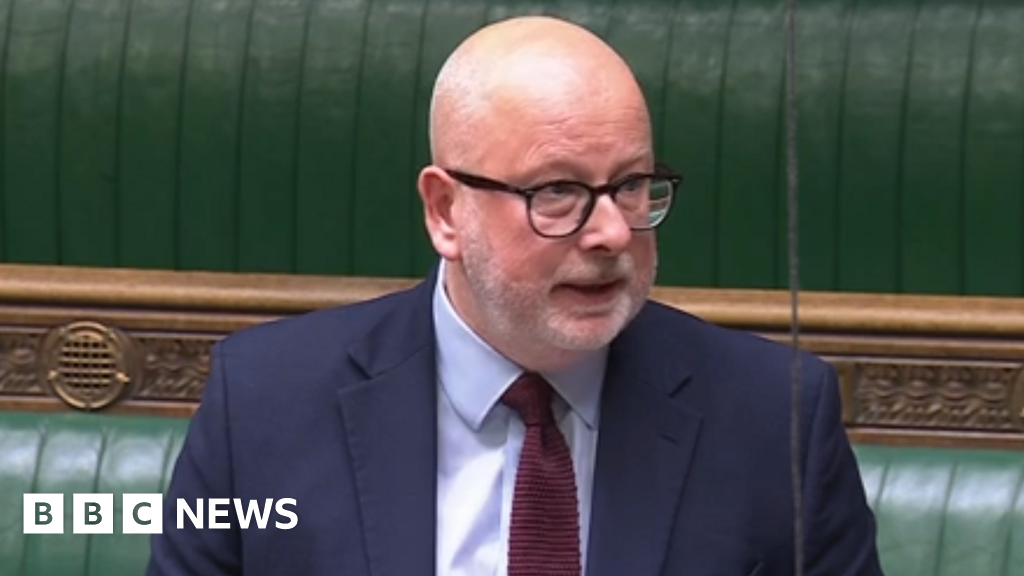ARTICLE AD BOX
By Catrin Haf Jones
BBC Wales political correspondent
image sourcePA Media
image captionWales is due to have eight fewer MPs at the next general election, dropping from 40 to 32Wales could lose eight of its 40 MPs under major proposals to change the country's Westminster constituencies.
Arfon, which covers part of Gwynedd, could go and the number of north-east Wales MPs could drop from six to four.
Welsh Secretary Simon Hart could face a battle for his seat as Carmarthen West and South Pembrokeshire is redrawn.
The Boundary Commission for Wales' initial plan would see 32 MPs in future, with finalised changes to take effect at the next general election.
The proposals, which were initially put forward by the Conservative UK government in 2012, will now be put to an eight-week public consultation so people can have their say on local or national boundaries.
But the Boundary Commission has no power to set the number of MPs and will not consider arguments around the number of constituencies
Under new Westminster rules each constituency proposed by the Boundary Commission for Wales must contain between 69,724 and 77,062 registered voters.
The only exception to that rule will be Ynys Môn, on Anglesey, which was given a "protected status" last year, meaning no changes to its name or boundaries - leaving it with 52,415 voters.
Every other constituency in Wales will see changes, with the majority changing names and some disappearing entirely by being absorbed into neighbouring constituencies.
One of the constituencies affected will be Carmarthen West and South Pembrokeshire, the seat held by UK government cabinet member Mr Hart.
The constituency, which has 58,048 registered voters, would be redrawn to include parts of the Preseli Pembrokeshire seat held by former Conservative Welsh Secretary Stephen Crabb and would be rebranded Mid and South Pembrokeshire, along with a new Ceredigion and North Pembrokeshire seat.
The former "red wall" seats of north-east Wales could also face cuts, with Clwyd South and Vale of Clwyd disappearing.
Clwyd South, a Conservative gain from Labour in the 2019 general election, would being split between Alyn and Deeside, Wrexham and a newly-named Montgomeryshire and Glyndwr constituency.
Another Tory gain in 2019, Vale of Clwyd, would also be absorbed by Clwyd and Delyn.
Arfon, which has 43,215 voters, will be split between Dwyfor Meirionydd and Aberconwy - with Caernarfon in the former and Bangor in the latter.
The Bridgend seat, another Conservative gain at the last election, would be split between a new constituency called Aberafan Porthcawl and a new Bridgend seat that would include parts of the current Ogmore constituency.
How were these plans decided?
The Boundary Commission said it considered several factors in developing its proposals, from geography to local and historical ties, as well as the required number of voters.
Secretary to the Boundary Commission for Wales Shereen Williams said: "We've had to propose significant changes due to the reduction in the number of Welsh constituencies and that's presented a particular challenge as we seek to develop a map which meets the conditions laid out in the (Parliamentary Constituencies) Act, but also meets the expectations of the people of Wales.
"We're confident that our proposals are a strong first attempt to create a workable map of 32 Welsh constituencies.
"The purpose of our initial proposals, however, is to start the conversation about how the new map will look."

 3 years ago
73
3 years ago
73








 English (US) ·
English (US) ·